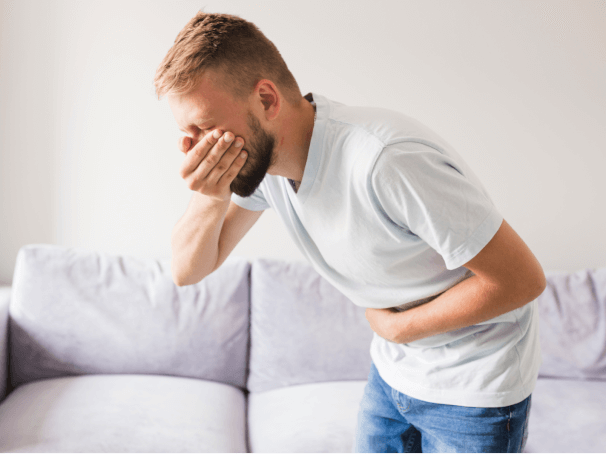
Mysophobia, perhaps better known as germophobia, is the fear of germs - microorganisms that can cause illness. Mysophobics, or germophobes, are often in significant distress because of their disorder. It compels them to clean frequently and excessively because they feel the world is full of germs that are invisible to the naked eye (and therefore could be anywhere and everywhere). They find themselves spending large amounts of time cleaning, buying numerous cleaning products frequently, and exposing themselves to the harmful chemicals most cleaning products contain.
This article will tell you whether you are mysophobic or just a tidy person, how mysophobia is caused, and what you can do to treat it.
Tidy vs. Mysophobic – How to Recognize the Phobia
Mysophobia is different from being extremely tidy. Though orderliness often results from the need to monitor surfaces for possible germs, the real concern of mysophobics is sterilization. This is problematic not only because of the time, effort, and money that they spend cleaning but also because highly sterile environments can keep a person from developing immunological resistance to bacteria, making them MORE susceptible to illness.
The more often a mysophobic person gets sick, the more they believe they have to clean, and so the cycle perpetuates itself.
Furthermore, mysophobic people experience the following symptoms in response to perceived germs. Perceived germs often take the form of dirt or grime, as well as potential germ contamination stemming from handshakes, coughing or sneezing.
- Persistent and Excessive Fear of Germs Both the perceived presence of and the anticipation of germs can lead a mysophobic person to feel anxious.
- Immediate Fear Response The person always or almost always becomes anxious as an immediate response to being exposed to or being at risk of being exposed to germs. Panic attacks may either always or only sometimes result.
- Recognition of Excessive Fear The person, if an adult, will realize that their fear is excessive, but still feel compelled to clean.
- Avoidance of Germs Germs are carefully avoided, which can mean cleaning their living area every day with disinfectant, or even refusing to visit friends or relatives due to the fear of contamination.
- Life Interference The fear of germs interferes significantly with the person’s everyday life.
It has been suggested that mysophobia is simply an element of obsessive-compulsive disorder, or "OCD." However, researchers have noted that the common OCD urge to avoid contamination by way of washing their hands has more to do with being compelled to wash their hands than it has to do with the fear of germs.
Why You Fear Bacteria
The fear of germs like bacteria, as is the case with most specific phobias, is commonly thought to develop during childhood, usually between the ages of 10 and 13, have to do with one of 3 main factors - personal fear experience, a witnessed fear experience, or an impersonal or learned experience. The last of these is the most common in cases of mysophobia.
- A personal fear experience for a mysophobic person might involve catching a serious or intensely uncomfortable illness from someone else or living in a dirty and dangerous environment. Getting sick after touching something perceived as dirty, even if it's unrelated, may also cause it.
- A witnessed fear experience might involve a family member or friend getting sick or dying from a disease.
- An impersonal or learned experience is likely to stem from learning about the prevalence and dangers of germs in school or from the media, or from the mysophobic or obsessive-compulsive behavior of a parent or other caregiver. This is very likely to be the cause. Many children are told to wash their hands when they touch gross things, or they're told that germs are everywhere and cause disease. These beliefs can be reinforced if a person gets sick or feels unwell after touching something they believe has germs.
Other Theories
While the above theories are related to the point of view that holds that nurture has more to do with phobia than nature, evolutionary psychologists have suggested that predisposition towards disorders like mysophobia and OCD may be at least partially the result of genetics. Their theory holds that humans who were highly aware of cleanliness and possible health hazards within their living area might have been more likely to survive than others who weren’t, leading to a genetic trait that is more prominent in some than in others. Remember that not long ago in our history, there was no such thing as soap, and so exposure to countless germs could mean early death in a way that is no longer true.
Treating Mysophobia
Treatment of mysophobia, OCD, and other anxiety disorders often involves a combination of therapy and antidepressant medications known as SSRIs, though therapy is usually the first course of action. The type of therapy most commonly used to treat phobias is called cognitive behavioral therapy, or CBT.
CBT is a type of therapy that utilizes three main treatments, namely exposure therapy, cognitive restructuring and relaxation training, sometimes in combination and sometimes individually depending upon the needs and desires of the client. Each of these types of treatment can be performed with the assistance and supervision of a therapist and reproduced in the comfort of your home.
- Exposure Therapy – Exposure therapy is a type of treatment involving exposing yourself to the object of your phobia, or germs, in the case of mysophobia. “Germ” exposure might take the form of touching dirt, or, to start out with something less challenging, touching a plant that was planted by a person wearing gloves whose gloves touched a shovel that touched dirt. After repeated and increasingly “intense” exposures wherein the mysophobic person focuses on calming techniques and is kept from washing their hands, they develop the ability to be in the presence of “germs” without feeling the need to disinfect themselves.
- Cognitive Restructuring – Cognitive restructuring is a treatment that seeks to reveal and change negative beliefs and thought patterns that occur to a phobic person in regards to their phobia. An example of this might be the belief that their reactions are out of their control, or that they are always at risk of dying due to surrounding germs. To do this at home, you may want to try writing about or questioning yourself about your fears to discover what beliefs you have and then decide on views that might be more healthy or useful for you to dwell on in the presence of germs.
- Relaxation Training – Relaxation training is about creating tools for you to use to calm your mind and body when you are confronted with germs. These tools may include relaxing visualization exercises, controlled breathing techniques, or physical and mental cues that can trigger a more relaxed state of mind. Joining a meditation group or watching videos on how to meditate can help you practice using these tools in your daily life.
It is also wise to remember that not all germs are bad germs. Some germs are good, and help us to maintain our health. To stay healthy and avoid killing off the germs you need, try the above methods to learn how to live in harmony with the underappreciated microbes of the world.










